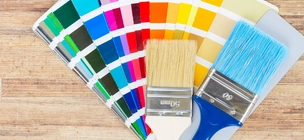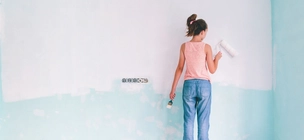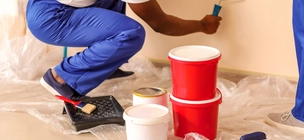Is your peeling exterior wall paint driving you up the wall? It’s more than just an eyesore—it can expose your external walls to the elements, leading to bigger damage and more costly repairs. If the paint on your flat exterior or house façade is starting to chip and flake, keep reading. You’ll learn why it happens and what you can do to fix it effectively.
Common causes of peeling exterior wall paint and moisture damage
- Excess moisture: High humidity or trapped water can erode paint and cause blistering. Over time, you’ll notice wall discolouration, water stains on walls, or even interior wall damage.
- Improper surface preparation: Paint placed on an unclean or moist surface may not properly adhere, leading to paint deterioration sooner rather than later.
- Weathered façade: Extreme sun, heavy rainfall, and fluctuating temperatures weaken the paint’s bond. Exterior wall cracks may also develop due to these harsh elements.
- Low-quality paint or wrong type of coating: Using unsuitable products, especially for outdoor wall deterioration, can result in peeling, flaking, or structural wall issues.
- Poor building maintenance: Overlooking small cracks or holes can allow water to seep in, causing further damage beneath the surface layer.
If you leave these causes unaddressed, you risk facing costly and extensive repairs. Paint that’s already peeling will likely spread to larger areas without prompt action, which can end up requiring complete repainting or even structural fixes.

Potential consequences of paint deterioration and exterior wall cracks
- Visible and growing damage: Peeling spots often get bigger fast, demanding more time and budget to repair.
- Moisture intrusion: With peeled surfaces, walls become more vulnerable to water infiltration, leading to moisture damage and mould growth.
- Worsening structural concerns: Untreated wall cracks may develop into more serious structural wall issues, which can endanger your home or flat exterior.
- Reduced property value: Prospective buyers usually see peeling exterior wall paint as a red flag, potentially lowering your property’s market price.
If you notice these red flags, getting them sorted sooner rather than later can save a lot of hassle.
Addressing the problem quickly not only enhances your curb appeal but also prevents more extensive damage.
Practical solutions for peeling exterior wall paint
1. DIY quick fixes (temporary solutions)
Step 1: Scrape away the loose paint. Gently use a paint scraper or wire brush to remove flaking bits. Wear protective gear to keep dust away from your eyes.
Step 2: Clean and dry the surface. With a mild detergent or cleaning solution, remove dirt and debris. Ensure the wall dries thoroughly to avoid further moisture damage.
Step 3: Repair small cracks. Use exterior-grade filler to patch up minor exterior wall cracks or holes. Smooth it out and let it cure fully.
Step 4: Prime and paint. Apply a primer specifically designed for your wall’s material. Follow with a weather-resistant paint that suits your climate conditions.
Potential pitfalls: Missing hidden damage (such as water damage signs behind the paint) can lead to repeated peeling. Also, cheap paint or skipping primer can result in an uneven finish.

2. When to call a professional painter
- Extensive peeling or large areas affected
- Evidence of structural issues or severe outdoor wall deterioration
- Persistent moisture problems or suspected mould growth
- Signs of interior wall damage like water stains on interior surfaces
If you have multiple warning signs, bringing in expert help is wise. Professional painters understand how to assess the condition of your walls thoroughly and apply the correct solutions.
3. Professional solutions: complete exterior wall restoration
In some cases, a thorough sanding and refinishing is required:
- Inspection and preparation: Pros evaluate the cause of the paint problems. They check for exterior wall damage and plan the optimal stage-by-stage repair process.
- Sanding and stripping: Professionals use heavy-duty sanders and paint strippers to remove old, flaking layers. This reveals any hidden cracks or holes that need filling.
- Surface repairs: Large cracks or structural wall issues are fixed using suitable fillers or cement. A primer coat is then applied to seal the surface.
- Quality paint application: Painters use high-quality, weather-resistant products designed for exterior conditions. They apply multiple coats for a smooth, durable finish.
- Final touches and sealant: To ensure the paint lasts, a protective sealant and waterproofing membrane (where needed) can be applied.
Benefits of going Pro: Experts have the tools, the experience, and the know-how to complete the job faster. You get a more durable finish, and many professional painting services back their work with a warranty so you’re not left worrying about a peeling paint job a year down the line.

If you’re concerned about cost or not sure where to find a reliable professional, we can connect you easily with vetted service providers for exterior painting. It’s a hassle-free way to ensure top-quality results.
Try this extra step to protect your walls
Applying a weatherproof layer over newly painted walls is a game-changer. Many water-repellent solutions are available that shield paint from moisture damage and keep your walls looking fresh year-round.






